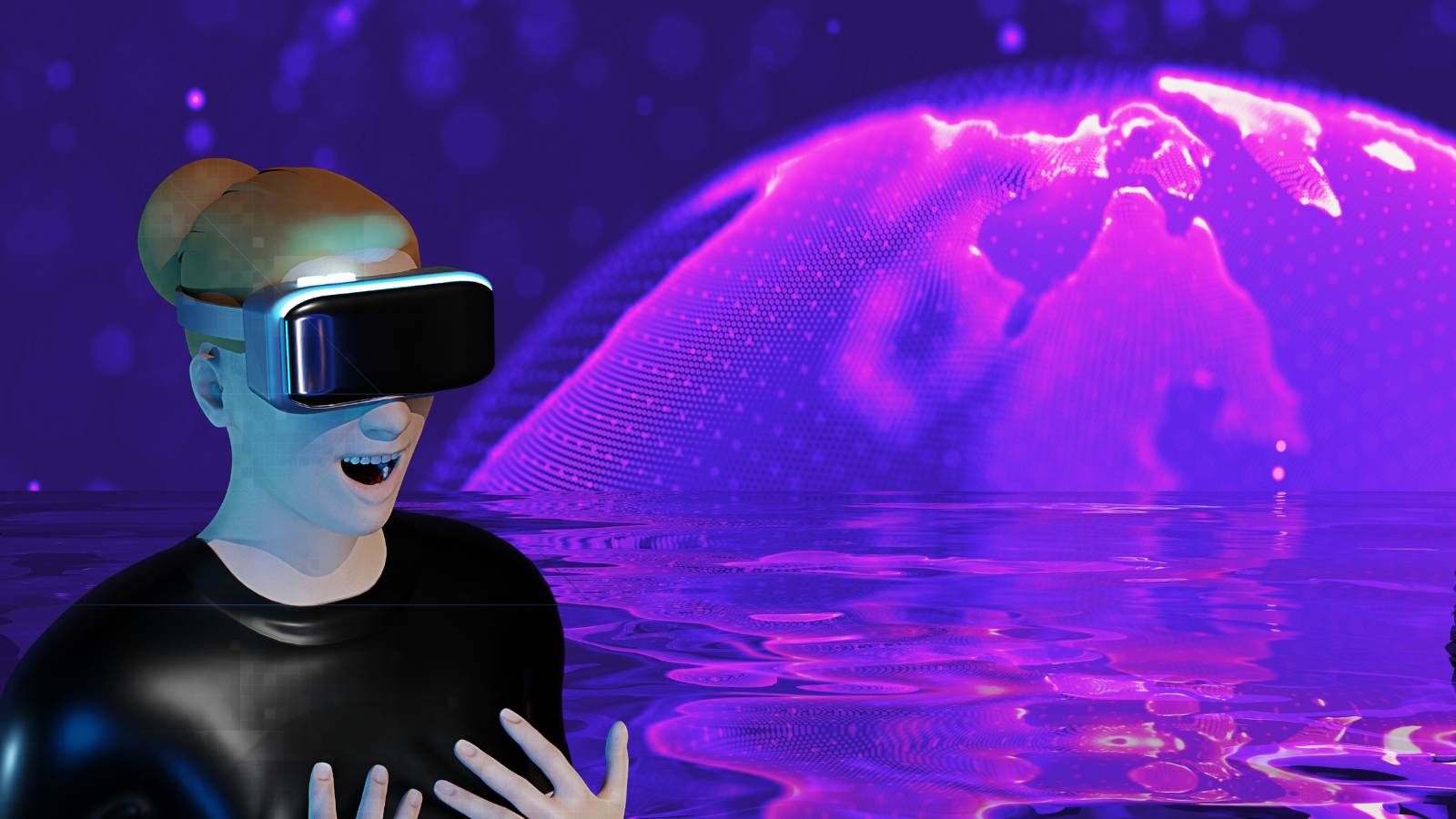Blog | Metaverse
How To Create A Metaverse World: Comprehensive Guide
Are you a future-minded entrepreneur? Then enter the revolutionary metaverse with our all-in-one Metaverse world creating guide.
- Blogs

How to create metaverse world

Introduction
From 2000 to 2010 was the era of the internet, during which people had access to a plethora of useful tools that changed the course of human evolution. The present and future will be remembered for the burgeoning technology Metaverse.
The Metaverse is awaiting to offer a new set of experiences such as live interactions, interoperable avatars, and virtual realms with a lot of exciting features and benefits. Blockchain will be the backbone of the Metaverse for a secure and decentralized experience.
At present, we are just experiencing the beginning of the metaverse via some leading gaming platforms and NFT marketplaces. Creating a Metaverse platform in the early stage and improving it along with the moving days can be a successful step in the future world of business.
In this blog, we will explore an End-To-End journey that covers everything about creating a Metaverse World, so fasten your seatbelts and set yourself to a launch into the revolutionary technology.
What is Metaverse?
Metaverse is a beautiful virtual 3-dimensional world created with the collaboration of leading technologies discovered by humans, where users can work, play, build, create, learn, buy, sell, and do all the real-time stuff in a perfectly crafted digital space where everyone is connected with each other.
Learn more about Metaverse in our detailed Podcast: Metaverse Explained
Read Here: What Is Metaverse?
Why Should You Invest In A Metaverse Platform?
When Zuckerberg introduced Metaverse, many thought that it was a simple VR space where users could do some little stuff. But, only a few of the tech giants recognized how it is going to revolutionize the future.
I will share with you a few, yet strong convincing points that will definitely change your thinking about Metaverse:
- The current worth of the Metaverse Market is $47 Billion.
- Executives are expecting that the compound annual growth rate can reach up to 44.1%.
- By 2030, the market size of Metaverse can reach up to a massive value of $8 trillion to $30 trillion.
- Metaverse is expected to have more than 400 million users per month.
Not convinced yet, Here are some reasons why people might consider investing in a metaverse platform:
- Growth Potential: The metaverse is often seen as the next frontier in technology and entertainment, with the potential to become a massive industry.
- Digital Real Estate: These virtual properties can be appreciated over time, similar to physical real estate investments. Investors may see potential in acquiring virtual land and assets within a metaverse.
- NFTs and Digital Assets: Non-fungible tokens (NFTs) and digital assets within metaverse platforms have gained significant attention. Investing in NFTs and digital collectibles can be a way to speculate on the value of unique virtual items and art pieces.
- E-commerce and Business Opportunities: Metaverse platforms can host virtual shops and businesses, offering new opportunities for e-commerce and entrepreneurship. Investing in these platforms could provide exposure to a growing online marketplace.
- Entertainment and Social Interaction: Metaverse platforms that offer compelling experiences and social engagement could attract a large user base and generate revenue through in-game purchases, events, and advertising.
How To Build a Metaverse Virtual World?
- Defining Requirement & Ideology
- Business Analysation
- Choosing the technology stack
- Designing The Metaverse
- Development Stage
- Testing Phase
- Launch & Maintenance
1. Defining Requirements & Ideology
In the journey to create a Metaverse virtual world, the first step is to define your vision and establish clear requirements.
Articulate the purpose and unique features of your virtual world. Consider the target audience, intended user experiences, and overall goals. Determine how your virtual world will generate revenue. Will it rely on virtual property sales, digital asset trading, subscription fees, advertising, or a combination of these?
2. Business Analysis
A crucial aspect of building a Metaverse virtual world is conducting a comprehensive business analysis. Analyze the market size, competition, and potential growth opportunities. Identify your virtual world's unique value proposition.
3. Choosing the Technology Stack
Selecting the right technology stack is pivotal to your virtual world's success. Decide on the core technologies, such as game engines, blockchain platforms, AI systems, and VR/AR tools, that will power your virtual world.
4. Designing The Metaverse
Design is at the heart of creating an immersive Metaverse virtual world. Create a virtual environment, including landscapes, buildings, avatars, and interactive objects. Develop 3D models, textures, and animations as needed.
5. Development Stage
During this phase, the technical foundation of your virtual world takes shape. Develop the software infrastructure, encompassing networking, physics simulations, AI systems, and user interfaces.
6. Testing Phase
Quality assurance is crucial to ensure a smooth user experience. Conduct comprehensive testing, including performance testing, security audits, and user experience testing. Continuously gather user feedback and make improvements.
7. Launch & Maintenance
With development and testing completed, it's time to introduce your Metaverse world to the public. Plan a coordinated launch, including marketing campaigns and partnerships to attract users. Foster an active and engaged user community through forums, social media, and in-world events.
You can create your own Metaverse by yourself if you have a lot of experienced programmers or a high-tech team. On the other hand, you can simply get connected with Metaverse Development Company or hire Metaverse developers.
Technology Ingredients Required For Metaverse World Development
As previously discussed, Metaverse is the combination of the latest and fine technologies. Let's reveal the major tech stacks that function behind the walls of Metaverse:
- Blockchain Technology: At the core of the Metaverse's digital economy lies blockchain technology. Blockchain ensures the security, transparency, and immutability of digital assets within the Metaverse.
- Augmented Reality (AR) and Virtual Reality (VR): AR and VR technologies are pivotal in creating immersive experiences within the Metaverse. VR headsets and AR glasses allow users to step into virtual worlds, interact with others, and explore digital landscapes as if they were physically present.
- Artificial Intelligence (AI): AI powers the intelligence behind NPCs (non-playable characters) and virtual assistants within the Metaverse. These AI-driven entities enhance user interactions, making virtual environments feel more dynamic and engaging.
- Spatial Computing: Spatial computing technologies, such as spatial mapping and recognition, enable the Metaverse to understand the physical environment and integrate digital elements seamlessly.
- Edge Computing: The vast amount of data generated within the Metaverse requires powerful computing capabilities. Edge computing facilitates low-latency data processing, enabling real-time interactions and reducing the burden on centralized servers.
- Decentralized Finance (DeFi): DeFi protocols and platforms play a significant role in the Metaverse's digital economy. They enable users to manage, exchange, and invest in virtual assets securely and independently, without the need for traditional financial intermediaries.
Metaverse runs with more small and important technologies like Web3, DAOs, and more. The tech stack will always vary with the creative ideas and requirements of the Metaverse owners.
Standards Required For Creating A Metaverse World
Everything we see and utilize via the internet has its own set of standards and protocols for all types of Read/Write, own, and so on. When it comes to the Metaverse, we will need to purely decentralized and open protocol that should support from small scripts to gaming-level animations, and top-end technology support in real-time.
A clear and straightforward Open interoperable standard will be required for multiple media types such as Video, Image, Audio, 3D Assets, Apps, and more.
- Metaverse world building requires free flow and windable open programming languages such as HTML, WebXR, WebGPU Shader Language, WebAssembly, and JavaScript.
- Extended Reality (XR) encompasses the fusion of real and virtual environments, facilitating human-machine interactions achieved through the integration of software technologies in tandem with hardware components such as smart glasses, Omni treadmills, haptic gloves, VR headsets, cameras, and scanning sensors.
- Utilizing blockchain and smart contract technology to ensure transparency, and security, and facilitate permissionless transactions.
- Harnessing substantial computing power to support data processing, projection, artificial intelligence, and other computational needs.
- Creating immersive 3D simulations of diverse virtual worlds that vividly replicate real-world environments and ecosystems.
- Providing a comprehensive selection of payment gateways that enable seamless digital currency exchanges and transactions, accommodating both cryptocurrencies and traditional fiat currencies.
Benefits Of Creating A Metaverse Virtual World
Building a Metaverse world will benefit both the platform owner and users in "N" a number of ways.
- New Revenue Streams: Building and operating a Metaverse virtual world opens up diverse revenue streams. This includes virtual property sales, digital asset trading, subscription models, advertising, and more.
- Digital Economy: Participate in the growing digital economy by facilitating transactions, trade, and commerce within your virtual world.
- Interoperability: Contribute to the evolution of interoperability standards, making it easier for virtual worlds to connect and share assets, enriching the overall Metaverse experience.
- Global Connections: Bring people together from around the world, transcending physical boundaries, to form vibrant communities and connections within the Metaverse.
- Rich Social Experiences: Create opportunities for social interaction, collaboration, and shared experiences, enhancing the quality of users' digital lives.
- Accessible Experiences: Design virtual worlds with accessibility in mind, ensuring that individuals with disabilities can also participate and enjoy the Metaverse.
- Inclusive Communities: Foster inclusive and diverse communities, welcoming individuals from all walks of life.
Top 15 Revenue Streams Of Metaverse World Development
Revenue streams in a Metaverse world are diverse and can be generated from various sources. Here are the primary revenue streams in a Metaverse world development:
- Virtual Property Sales
- Digital Asset Sales and Trading
- Subscription Models
- Advertisement and Sponsorship
- Virtual Events and Experiences
- In-World Commerce
- Virtual Services
- Asset Development and Sale
- Fees for Virtual Currency Exchange
- Data and Analytics Services
- Customization and Personalization
- Royalties and Licensing
- Virtual Currency Sales
- Consulting and Development Services
- Asset Storage and Management
How Much Does It Cost To Create A Metaverse World?
Well, to be honest, no one has the exact answer to this question. yes, the Metaverse world can have some sort of thing or everything. Thus the price also varies and faces fluctuations with the requirements and ideas.
The average value for creating a metaverse world will cost around $50,000 to $30,000,0 USD.
Metaverse Virtual World FAQs
1. Can I Build My Metaverse World On My Own?
Yes, you can create your own metaverse world, if you have your own team of metaverse experts and developers.
2. What technologies are used to create a Metaverse world?
Technologies such as Blockchain, AR, VR, Unreal Engines, Javascript, and more are required to create a metaverse world.
3. How secure is Metaverse World?
The security of the Metaverse World depends on several factors, and it can vary widely depending on the specific platform or application.
Other services we offer,
Get A Demo
We are glad to announce that, Bitdeal is making one more milestone in its journey. As Web3 technologies becomes more dominant and lucrative, bitdeal sets its footmark in AI and Gaming Space. Explore our all-new AI and Gaming Solutions below here.